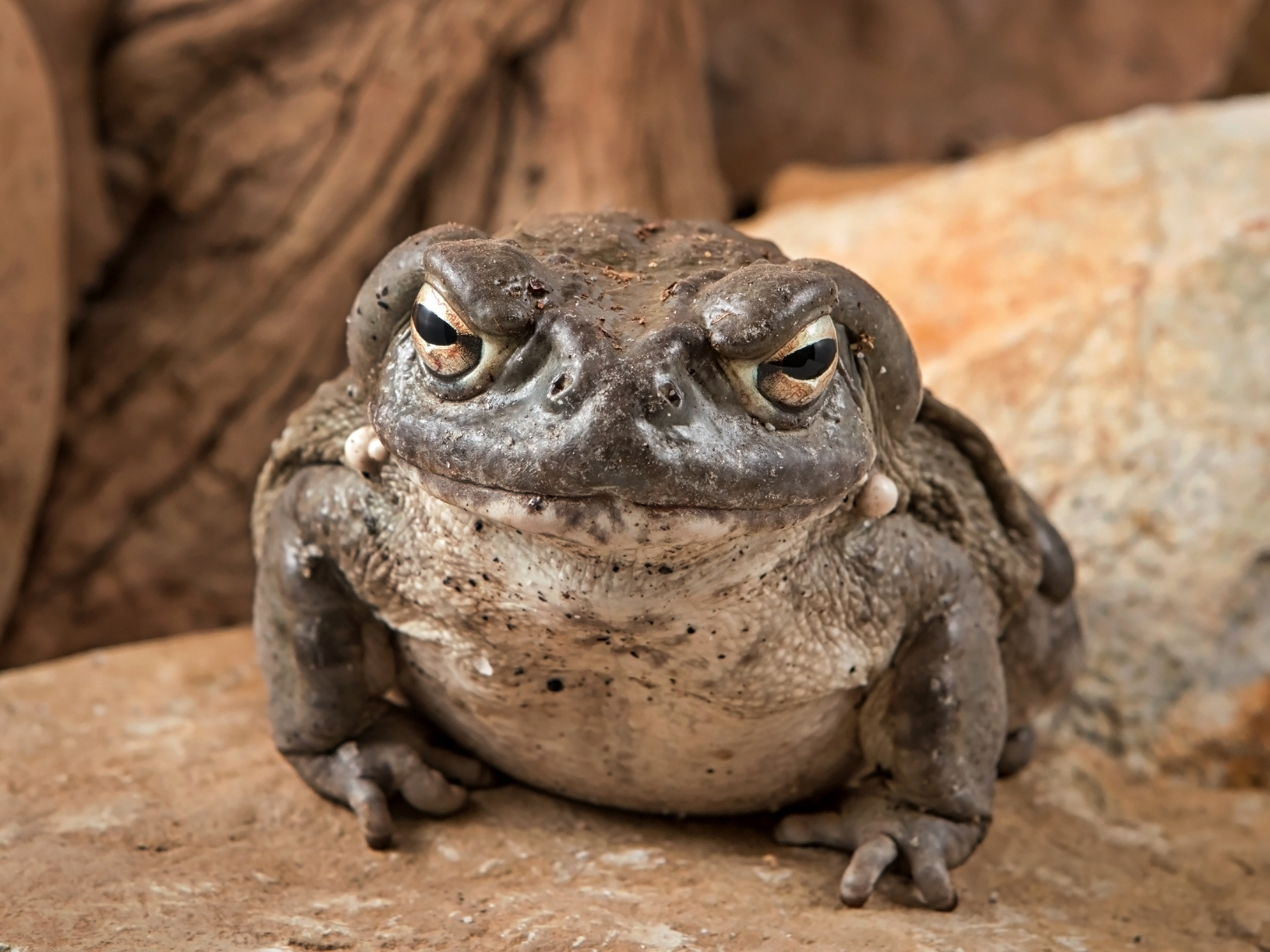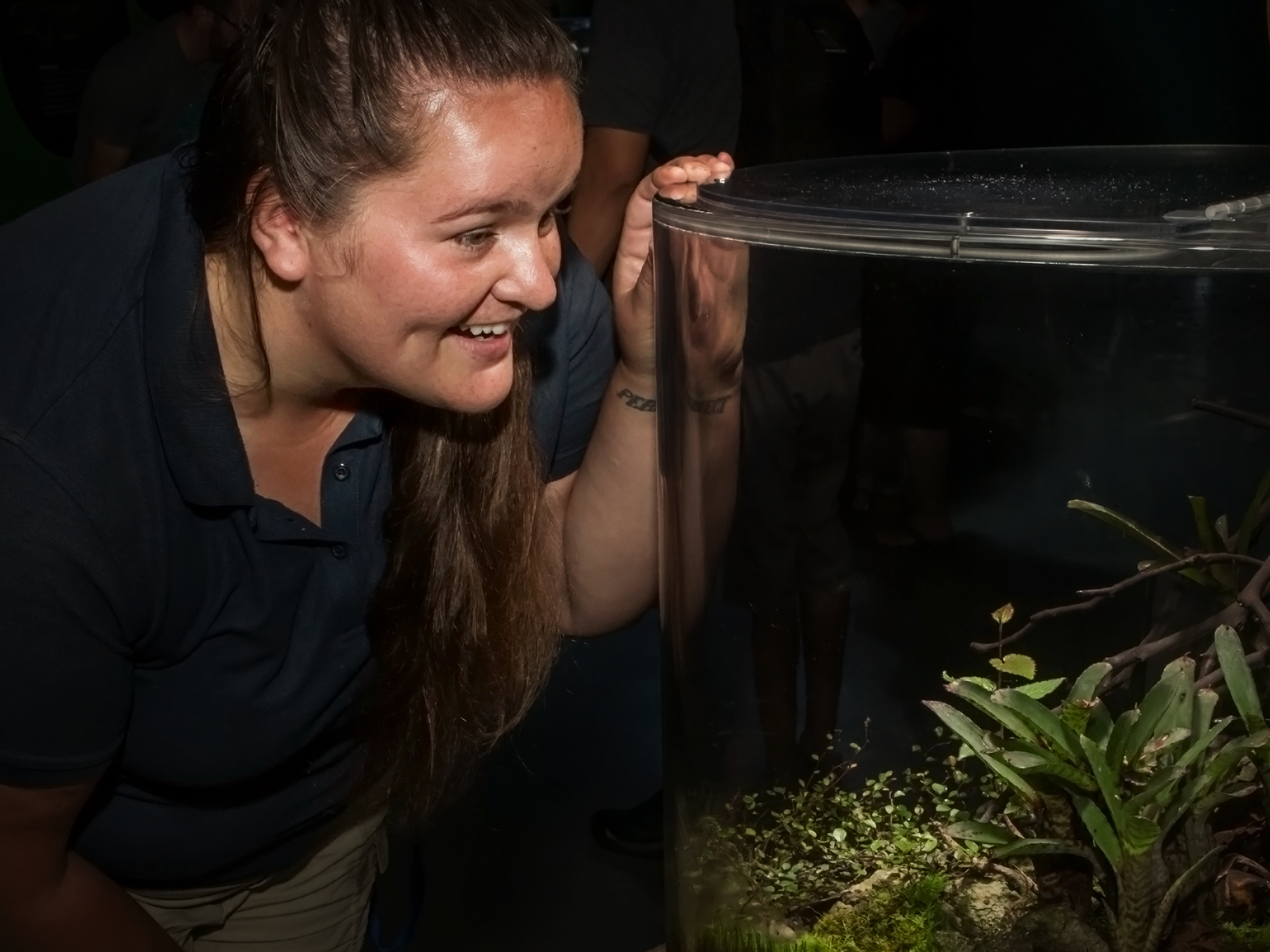Taking Care of Frogs

In Focus
Tuesday, October 31, 2017
Earlier this year, FROGS: Dazzling and Disappearing opened at the Aquarium. Frankie Lill, one of our aviculturists, has been taking care of the animals in this exhibition.
Since this was the first time the Aquarium had an entire exhibition dedicated to frogs, I was excited to be joining a team of aviculturists and mammologists that would take care of the nineteen different species of frogs and amphibians.

First off, we had to build the exhibits. My colleagues and I put a lot of time in researching the different plants and terrains of each animal’s habitat so that we could build a space tailored to each animal.

There are three layers of filtration in every exhibit—clayballs, plenum, and gravel—that allow water to circulate through the bottom of the exhibit. On top of the filtration layers, we put in dirt, moss, and different types of plants. We purposefully designed the exhibits so that you could see these layers and understand how much goes into each one.
A challenging part of the design is that frogs like to hide but people are coming to the Aquarium to see them. So, we had to get creative to find a balance between creating a space where the frogs wanted to be and how much people could see.

For instance, our Sonoran Desert Toad was most content sitting at the back of the exhibit where no one could see him. So we raised the back up a bit, and now the sightline is much better.
True to their name, our Solomon Island leaf frogs love to hide between leaves. Most of the other animals hide in the spaces built into their exhibits. We jokingly refer to these spaces as hobbit holes or coco huts. They are often filled with water so that the frogs can get their daily dose of H2O.

See, frogs don’t drink through their mouths like we do but actually take in water through their skin. Unfortunately, this part of their physiology has made them susceptible to pollution in their habitats and is major factor in why they are disappearing at an alarming rate.
They are also highly susceptible to changes in their environment. That’s why I’ve been volunteering my time outside of work to the Mountain Restoration Trust. We help clean up the Malibu Creek Watershed and remove invasive species so that frogs in the area can thrive.
Taking care of the many different animals has been a learning process. While we’ve spent hours doing research and reaching out to colleagues at other zoos and aquariums, there is nothing like learning on the job.

Most of the amphibians eat insects. We feed them crickets of all sizes, fruit flies, and dubia roaches (which are slightly smaller than the common cockroach that most people know).

Our magnificent tree frogs eat horn worms that look like blue caterpillars, and the newts eat bloodworms.
It’s been trial-and-error when figuring out what the hellbender salamanders will eat. At first we offered them shrimp and live crawfish, but they seem to like silverside fish and mackerel the best.
Some of the amphibians will eat from your hand. Others prefer to catch the food on their own, so we drop the insects in and let them eat when they want.

I really love working with these fascinating creatures and have developed a fondness for each and every one of them. It’s fulfilling work to take care of the frogs and amphibians, and I’m happy to be a part of the conservation of so many species.

